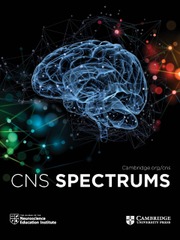Article contents
Nutritional Contributions to the CNS Pathophysiology of HIV-1 Infection and Implications for Treatment
Published online by Cambridge University Press: 07 November 2014
Abstract
Nutritional deficiencies are commonplace in patients with human immunodeficiency virus type 1 (HIV-1) infection, and recent research has indicated that nutritional factors may play an important role in the pathogenesis of HIV-1 disease. Although nutritional deficiencies are unlikely to be the primary causative factor in disease progression, they may contribute to cognitive dysfunction, neurologic abnormalities, mood disturbance, and immune dysregulation associated with HIV-1 infection. Furthermore, deficiencies of specific micronutrients have been associated with increased risk of HIV-1–associated mortality. This article will briefly summarize the role of macronutrient deficiency, the interactions of specific micronutrient deficiencies with neuropsychiatrie functioning, and the role of these factors in HIV-1 disease progression. Since recent research has shown that normalization of many nutritional deficits and supplementation beyond normal levels are associated with improvements in neuropsychiatrie functioning, potential treatment implications will also be discussed.
- Type
- Feature Articles
- Information
- CNS Spectrums , Volume 5 , Issue 4: HIV and the Central Nervous System: Part One , April 2000 , pp. 61 - 72
- Copyright
- Copyright © Cambridge University Press 2000
References
REFERENCES
- 6
- Cited by




